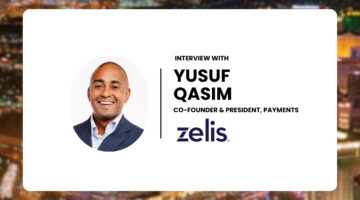
Healthcare’s relationships with AI and digital transformation are a mix of excitement and uncertainty. Even as hospitals begin to see returns on their technology deployments, leaders acknowledge that they’re still experimenting and learning in real time.
Two health system executives discussed the rapidly developing state of digital healthcare tools last week at MedCity News’ Tête-à-tête Health event in Las Vegas, which was sponsored by Canopy. These leaders — Laura Wilt, chief digital officer at Sutter Health, and Scott Arnold, chief digital and innovation officer at Tampa General Hospital — believe the future of healthcare will depend on how well providers are able to blend digital innovation with empathy and sound oversight.
You can watch Arundhati Parmar, MedCity’s editor-in-chief, interview Arnold here, and you can watch her interview Wilt here. Both video interviews are also embedded at the end of this article.

Transforming the OR: CEO Reveals Game-Changing AI Tech for Better Efficiency
How Apella leverages technology to increase OR efficiency.
Agentic AI deserves the hype
Of all the healthcare AI tools flooding the market, Arnold is most excited about AI agents that automate nonclinical work behind the scenes.
AI agents are autonomous, task-specific tools designed to perform functions with little or no human intervention. Some health systems are using these tools to handle tasks like scheduling, prior authorization management, document processing and patient phone calls.
Arnold noted that Tampa General’s early experiments with agentic AI in its call centers are already paying off.

How Zelis is Transforming Healthcare Payments with Enterprise AI
How Zelis hopes to solve the healthcare financial system for payers and providers.
He added that he thinks the use of agentics to streamline back-office tasks could soon become a competitive differentiator for health systems.
“It’s still early with a lot of health systems. I’m surprised not more are bullish on it. It’s just one of those things that, when done correctly, can really supercharge your brand in a community and relieve a lot of people from doing a lot of administrative work that, frankly, a machine can do,” Arnold declared.
The human touch cannot be lost
While healthcare providers are deploying AI tools left and right to automate rote tasks, empathy and human touch still remain central to healthcare, Wilt pointed out. And even as more AI models make their way into the clinical side of healthcare, a human expert stays in the loop, she noted.
The clinician — not the AI tool — is still the one who gets to validate insights, make treatment decisions, ensure that care is delivered empathetically, Wilt explained.
“I think tech use is wonderful. I think humans use tech — and so what I would challenge all of us to do is just make sure we’re keeping people at the center of those decisions,” she remarked.
Arnold also highlighted the importance of maintaining the human touch when deploying AI. He stressed that while AI is proving its value when it comes to the science of medicine, it can never be expected to master the art of medicine — the nuanced, human side of clinical decision making.
Plenty of unknowns remain when it comes to AI’s governance and regulation
In the AI governance realm, health systems are still learning as they go. For instance, Tampa General has strong oversight on where AI is being deployed across its system, but they are just beginning to monitor for model drift to ensure that models continue to perform accurately over time, Arnold said.
The hospital is reshifting some staff roles so more people can manage and audit these AI systems on an ongoing basis, he added.
Wilt emphasized the importance of ongoing monitoring as well.
“It’s really how you adopt it, how you make decisions based on what you find, and then how you revisit it, too. You can’t just let AI continue to run and not monitor it — you have to have a monitoring program in place,” she stated.
She added that regulating AI broadly is ineffective, arguing that efforts to increase oversight should be more precise.
“Saying that you’re going to regulate AI is like saying you’re going to regulate the Internet,” Wilt declared. “I think there’s definitely a place for rules, guidelines and monitoring — I think that it needs to be very targeted and specific.”
Making healthcare staff feel better about coming into work
When measuring the success of AI deployments, health systems need to look at more than just the hard-dollar ROI, Wilt pointed out.
“We don’t just look at dollars — we look at time saved, which could translate to dollars. We look at opportunities for how you could maybe do more, how you could see an additional patient, perhaps. We also look at other types of metrics, like patient experience metrics. We look at access metrics,” she explained.
Those factors “add real value” to an organization and to a physician, Wilt added. To her, success has to be measured holistically, taking into account if a technology is able to make a clinician’s day-to-day responsibilities easier.
Arnold also discussed healthcare’s dire need for tools that alleviate healthcare workers’ burnout.
Like many other physicians across the country, those at Tampa General have been singing the praises of ambient documentation tools, which can sometimes reduce a physician’s workload by hours per day, Arnold noted.
Tampa General is tracking data on retention as it relates to burnout, and the hospital is already finding that ambient scribes are the difference between some people staying in or leaving the clinical workforce, he said.
“I’ve had more than a handful come up to me and say, ‘Scott, I was going to retire. I hate the administrative part of the job. What you guys deployed, this ambient technology, has liberated me from the nighttime activity that I used to do — and I can hang out with my family a little bit more, so I’m going to do this a little bit longer,’” Arnold remarked.
In its efforts to keep improving retention, Tampa General has also deployed Evolv’s weapon detection scanners in its facilities to reduce the rate and severity of workplace violence.
The system has deterred potential threats, and staff members also have access to digital panic buttons on workstations for emergency alerts, Arnold stated.
These efforts show that the value of technology extends beyond efficiency or cost savings — digital tools can also support staff and improve safety.
Photo: Vithun Khamsong, Getty Images






